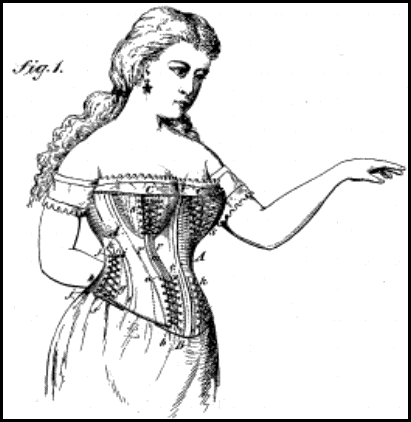A Natural and
Unnatural History
Florence Williams
(Norton)

- Funbags. Boobsters. Chumbawumbas. Dingle bobbers. Dairy pillows. Jellybonkers. Num numbs.
"We love breasts, yet we can't quite take them seriously. We name them affectionately, but with a hint of insult."
- Breasts embarrass us. They're unpredictable They're goofy. They can turn both babies and grown men into lunkheads.
Williams quickly turns serious. In the United States, 700 new chemicals come on the market each year, in addition to the 82,000 already being produced. "Only a few hundred have ever been tested for health effects, and only five have been banned."
- Of the 650 top-volume chemicals in use, four billion pounds get released into the American air and water each year. Forty-two billion pounds are made here or imported each day, for use in products and materials. [Emphasis hers.]
And why does this horror story --- so familiar to many of us --- appear in a book on breasts? Because the mammary gland "is the most sensitive organ" when it comes to being blindsided by chemicals. It stores in its tissues "known culprits such as BPA, DDT, and a common weedkiller called atrazine." And so many more work their way into the tissues, from all sorts of unexpected sources: fake leather, the insides of tin cans, sunglasses, plastic wraps, rubber gloves, soaps, deodorants, toys, shower curtains, soap, sun screen, vinyl, car seats, and especially new furniture.
These chemicals are the gift that keeps on giving: "When we nurse our babies, we feed them not only the fats and sugars that fire their immune systems, cellular metabolisms, and cerebral synapses."
- We also feed them, albeit in minuscule amounts, paint thinners, dry-cleaning fluids, wood preservatives, toilet deodorizers, cosmetic additives, gasoline by-products, rocket fuel, termite poisons, fungicides, and flame retardants.
"If human milk were sold at the local Piggly Wiggly," she observes, "it would exceed the federal safety levels for some of those chemicals in food."
And it's not just Americans whose bodies are being contaminated with this stuff. "The Inuit, although they live in the remote Arctic with little nearby industry, are the most contaminated population on earth, besides victims of industrial accidents."
- But don't picture Eskimo Man in sealskin on the top of the food chain. Picture his suckling baby, who occupies yet another trophic level higher up.
"If all this is not creepy enough, some of the daughters will stay in their bodies long enough for them to bequeath them to their offspring. Even if we cleaned up our planet tomorrow the industrial detritus of the last century has created a three-generation problem."
Williams is a shrewd writer. This most disquieting chapter turns up exactly half-way through Breasts. She knows that a pure double-whammy horror show upfront would quickly turn off even the most loyal --- or most eco-sensitive --- of readers.
The common breast is not without risibility in our culture, so the author interlards the ghastlies with chapters titled "Fill Her Up," "What's for Dinner," and "Holy Crap." There is a whole section devoted to "boob jobs," and "the shelf life of breasts," and the author even seeks out Carol Doda, the original Boob Job Queen. (She now contentedly runs an antique store in San Francisco).
There are cheery asides on the pleasures on pregnancy, the joys --- the connectedness --- of breast feeding. Early on, it was touted by La Leche, an association founded in 1956 by "a couple of Catholic matrons, not normally known for upholding mammalian urges."
There is here a generally merry feel throughout: "It's something I've said before, but it's so cool I'll say it again: these are the only organ in the body that is not fully grown by adulthood. Breasts grow up when there's a baby cooking one story down."
She is quick to follow such felicities with, for example, a study of women's cancer:
- Here's what we know: a woman who has had her first child before age twenty has about half the lifetime risk of breast cancer as a non-mother or a mother who waits until her thirties to have children.

The heroes in this book? They would be the few scientists who are working on their own to identify the chemical and biological threats to us and our children. Those who toil on despite an indifferent public, and an even more indifferent government.
At one point we learn about hundreds --- perhaps thousands --- of cases of breast cancer that developed in one locale. It befell marines who served at Camp LeJeune, North Carolina for thirty years, from the mid-1950s to the mid-1980s. They were drinking and bathing in water that came from well number 602, water thoroughly contaminated by a plume of underground petrochemicals, water that served eight thousand people, water that "yielded a reading of 380 parts per billion of benzene," which was "seventy-six times the legal limit for benzene, a human carcinogen."
So far, countless ex-Marines have developed breast cancer among other illnesses (their children and wives were exposed as well). As one ex-marine said, "I felt like a freak. I got no breasts, how can this be? I'm a marine. I'm a bad ass. I work out all the time, I ate good, I exercised, stayed fit my whole life, never smoked or did drugs, and you try to figure out how can this have happened?"
Oh, yes: there are some other heroes (or heroines) here. One is breast milk. Its constituents are most versatile. If your baby is a boy, the milk is richer in fat; if a girl, less so; if your baby is premature, the milk will have constituents to compensate for that. How does it know? Scientists call it crosstalk, "one part of the body communicates with another and vice versa."
- In the case of the lactating breast, the organ is communicating not only with its immediate landlady but also with the infant.
We give this title one of our rare stars for style, content, organization, and readability. And after I finished with it, passages stayed with me ... in some cases, ones that had little or nothing to do with lactation or mammaries. For example: the Renaissance doctor Bernardino Ramazzini was interested in the causes of diseases, and was one of the first medicos to study occupational hazards. One of his studies had to do with midwives who collected their own special sicknesses (and gave it, naturally, to the mothers and children they were helping). Williams notes, "In the archaic translation I have, most of the s's look like f's," rendering pronouncements on nurses like this: Nurfes ... are likewife fubject to various Difeafes in the Course of fuckling.